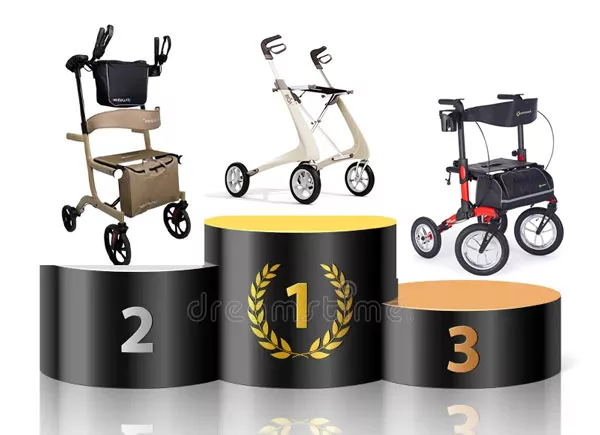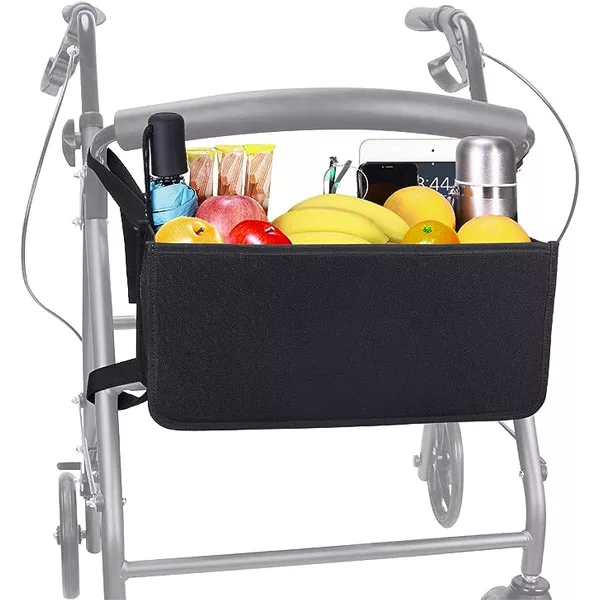Safety Tips for Using Mobility Aids: A Senior’s Guide to Navigating Life on the Move
Table of Contents
Introduction
Mobility aids are a godsend for many seniors, helping them maintain independence and carry out daily activities. But let’s face it, while these aids are beneficial, they’re not without their risks.
That’s why we’re here to talk about the nitty-gritty of using mobility aids safely. Buckle up, or should I say, lock those wheels!
Why Safety Matters
You might think, “It’s just a cane; what could go wrong?” Well, a lot, actually. According to the Centers for Disease Control and Prevention, one out of four older adults falls each year.
And let’s not even talk about the dreaded “I’ve fallen, and I can’t get up” scenario. Safety isn’t just a word; it’s a lifeline.
General Safety Tips for All Mobility Aids
Whether you’re using a cane, walker, or a full-blown wheelchair, some rules are universal:
- Always read the user manual. Yes, even if you think you know it all.
- Regular maintenance is not optional; it’s a must.
- When in doubt, consult a healthcare provider.
Safety Tips for Using Canes
Ah, the cane—a classic. But even classics need a modern safety twist. Here’s how to use a cane without turning into a human pendulum:
- Adjust the height. Your elbow should bend at a comfortable angle.
- Hold the cane on the opposite side of your weaker leg.
- Common mistake alert: dragging the cane. Always lift it off the ground as you walk.
Safety Tips for Using Walkers
Walkers are like the SUVs of mobility aids—sturdy and reliable. But they also need regular tune-ups.
- Make sure all four legs are on the ground before putting your weight on it.
- Don’t use the walker to pull yourself up; that’s a recipe for a tumble.
Safety Tips for Using Wheelchairs
Whether you’re in a manual or electric wheelchair, safety is key.
- For manual wheelchairs, always lock the wheels when getting in or out.
- For electric wheelchairs, get to know your controls. A joystick is not a toy.
Safety Tips for Using Scooters
Vroom, vroom! Mobility scooters can be fun, but they’re not bumper cars.
- Understand the controls and limitations.
- Always use the safety belt. Yes, they have those!
The Role of Caregivers in Safety
Caregivers, you’re the unsung heroes. Your role in ensuring the safe use of mobility aids is crucial.
- Always assist in the initial setup.
- Regularly check for wear and tear.
When to Seek Professional Help
If you’re experiencing discomfort, pain, or something just feels “off,” it’s time to consult a healthcare provider. They can adjust your mobility aid or provide training on proper usage.
Conclusion
Safety and mobility aids go hand in hand, or wheel in wheel, if you prefer. Remember, an ounce of prevention is worth a pound of cure—or in this case, a safe step is worth a mile of mobility.
Frequently Asked Questions
What are the most common mistakes people make when using mobility aids?
Overconfidence and lack of maintenance are the usual culprits. Many people think they’ve got it all figured out and skip the user manual, leading to mishaps.
How often should I inspect my mobility aid?
At least once a month or after any “incidents.” Regular check-ups can prevent a minor issue from becoming a major problem.
Is it safe to use second-hand mobility aids?
It can be, but they should be thoroughly inspected and approved by a healthcare provider. You don’t want to inherit someone else’s problems.
What should I do if I experience discomfort or pain while using my mobility aid?
Consult a healthcare provider immediately for an assessment and possible adjustments. Pain is your body’s way of saying something’s not right.
Can I use my mobility aid on all types of terrain?
Not all mobility aids are created equal. Some are better suited for indoor use, while others can handle the great outdoors. Always check the manufacturer’s guidelines.
Do I need a prescription for a mobility aid?
Some insurance companies require a prescription for reimbursement. Consult your healthcare provider and insurance for details.
How do I clean and sanitize my mobility aid?
Most mobility aids can be cleaned with mild soap and water. For sanitizing, alcohol-based wipes are effective. Always check the user manual for specific cleaning instructions.
Can I travel with my mobility aid?
Yes, but you’ll need to make special arrangements if you’re flying. Airlines have specific guidelines for transporting mobility aids.
What’s the lifespan of a typical mobility aid?
The lifespan varies depending on the type of aid and how well it’s maintained. Canes and walkers generally last longer than electronic aids like scooters.
Are there any accessories that can make using my mobility aid easier?
Absolutely! From cup holders to storage baskets, there are plenty of accessories that can enhance your experience.
How do I know when it’s time to replace my mobility aid?
Signs of wear and tear, like squeaky wheels or loose handles, are indicators. Also, if your mobility needs have changed, it might be time for an upgrade.
Can I customize my mobility aid?
Many companies offer customization options, from colors to added features. However, any modifications should be approved by a healthcare provider to ensure they don’t compromise safety.








3 Comments
Comments are closed.